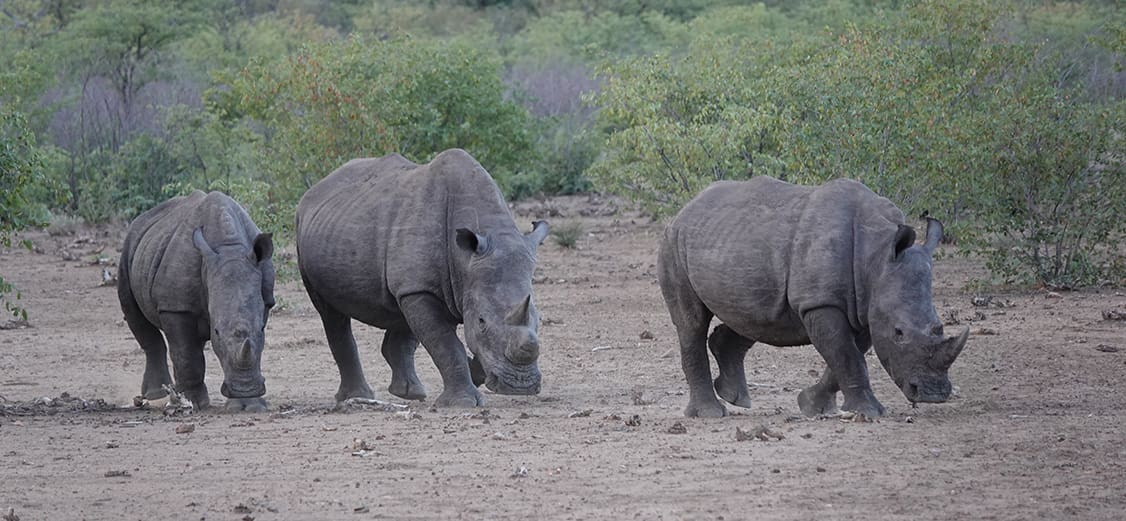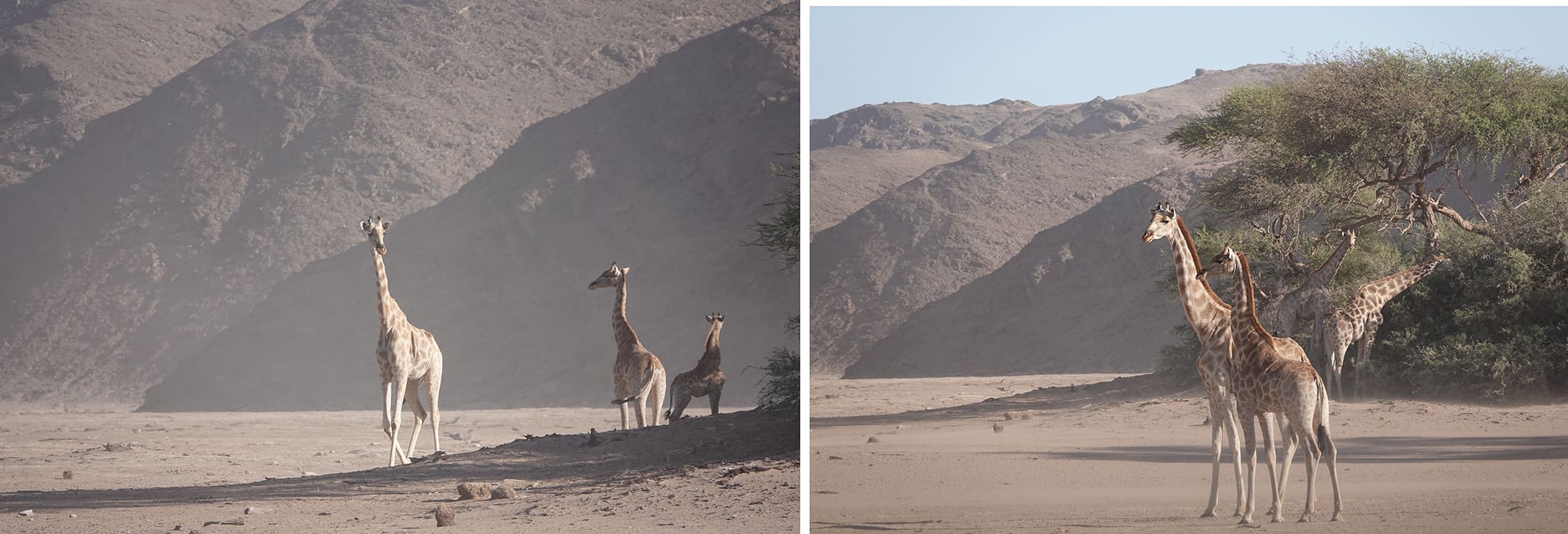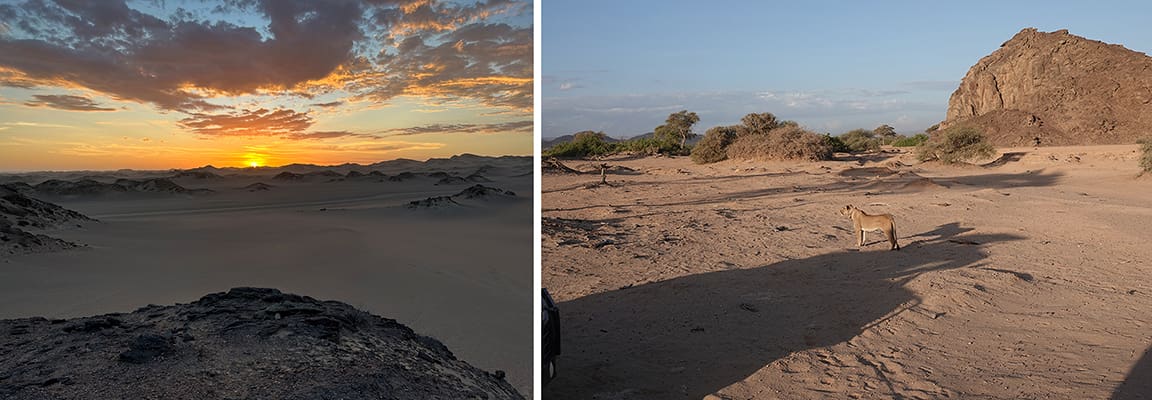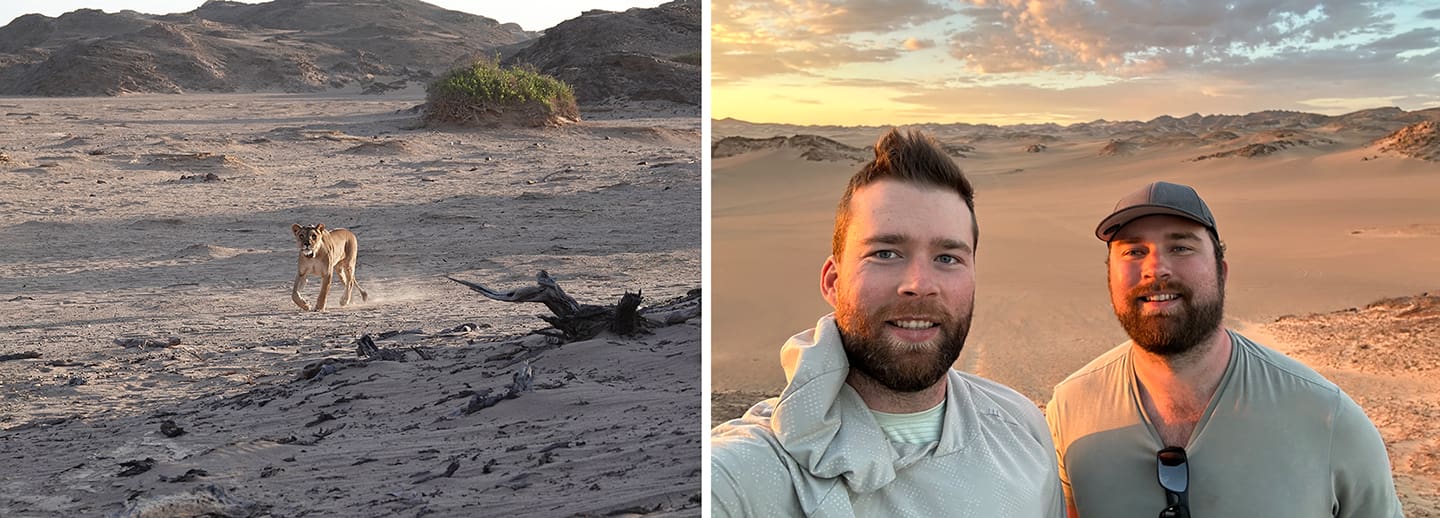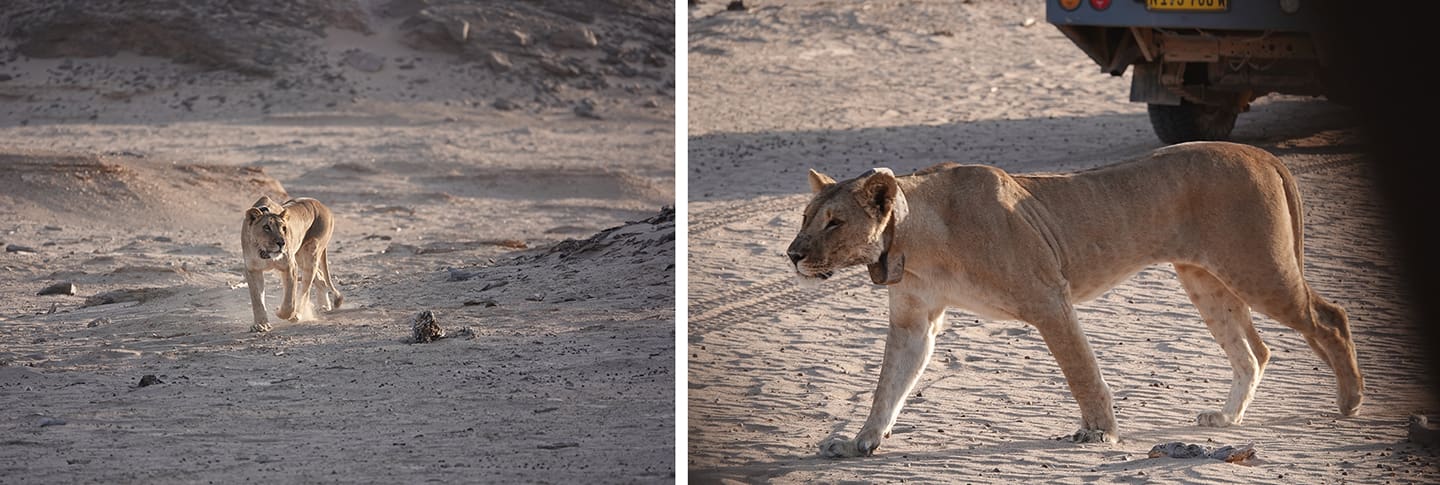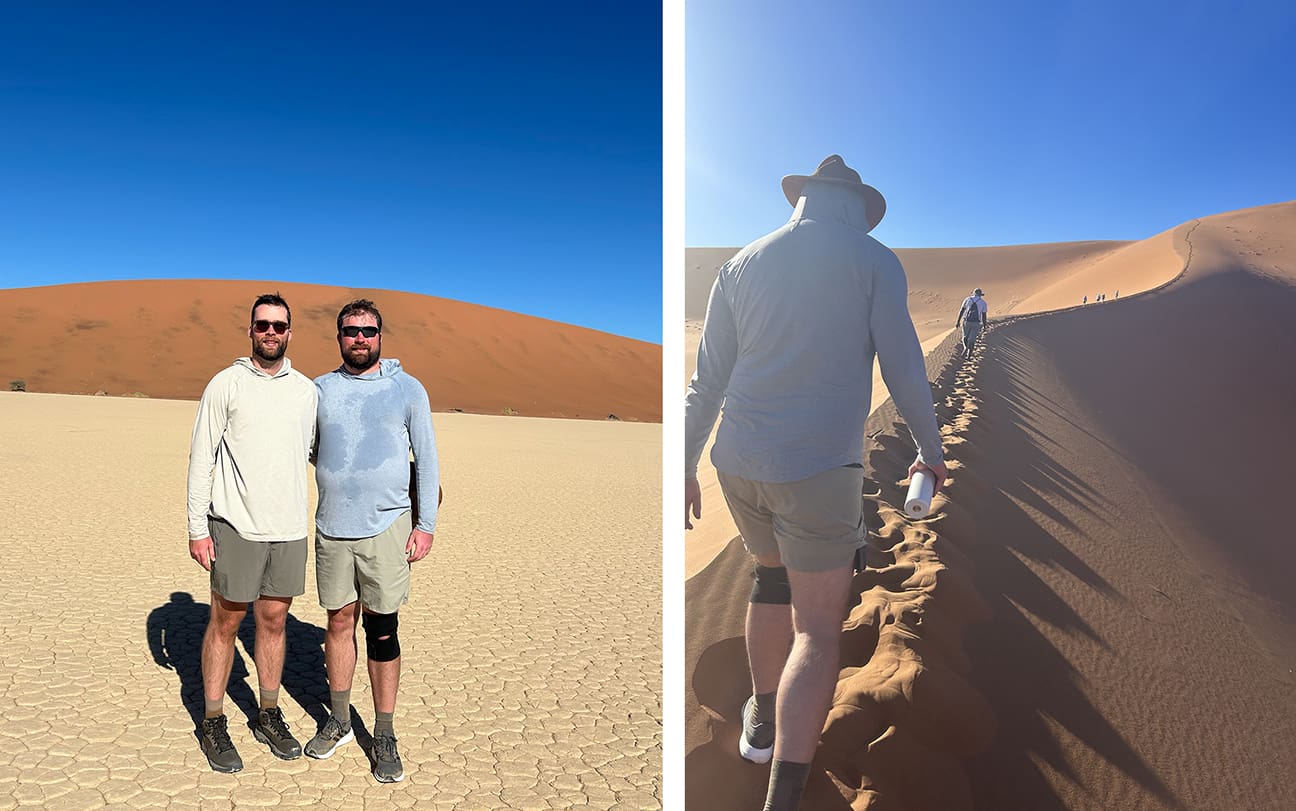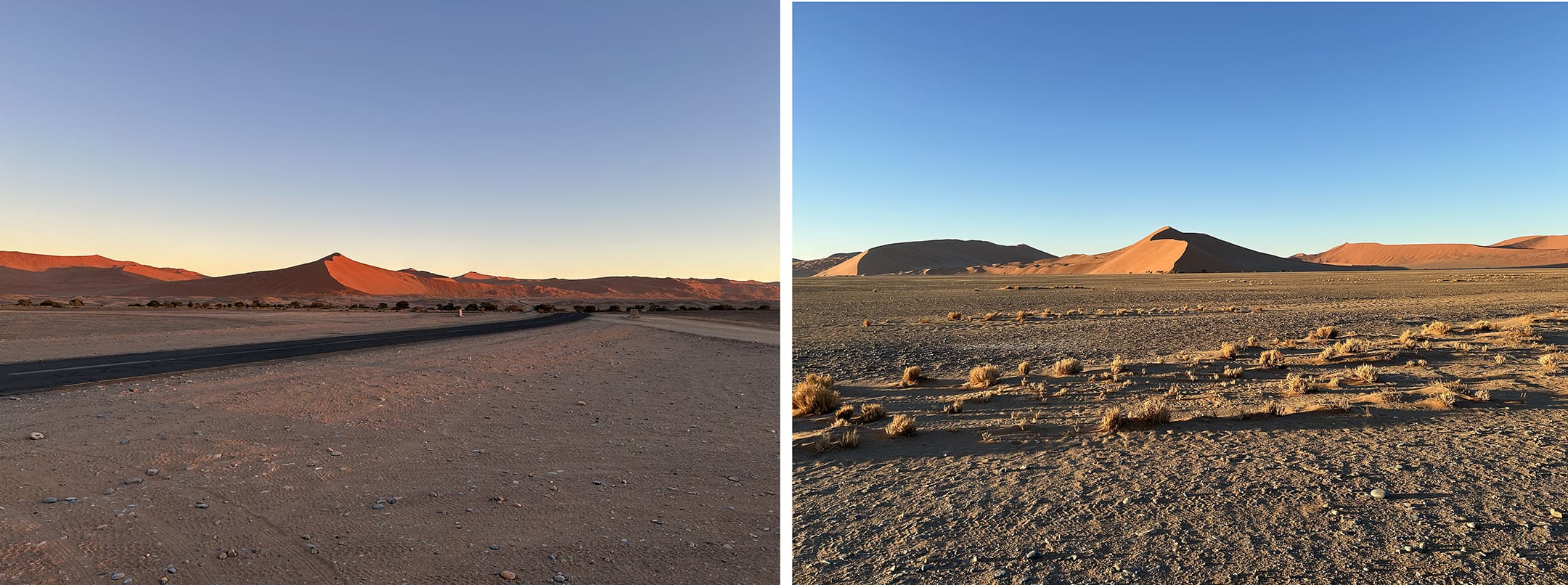Miles in Namibia
Day 1-3:
My 10-Day Flying Safari to Namibia began with three nights at Andersson’s at Ongava. Located in the Ongava Private Game Reserve bordering Etosha National Park, this is one of the best places in Africa to see both black and white rhinoceros. I was fortunate to have multiple sightings of each, as well as many other great wildlife sightings!
Left: During our first sundowner, my guide Pascales (somehow) heard leaves rustling. In the dim dusk light, he was able to make out a solitary female black rhino. We then followed her to a nearby waterhole. Right: A Pale Chanting Goshawk perched atop a tree as it waits for prey to approach.
Left & Right: On my second morning, I decided to go into Etosha National Park for a morning game drive. Ongava has a gate right next to the main gate, allowing us to be one of the first people to queue before the gates opened. The main highlight was watching this lion and lioness walking across the open plains in the early morning.
Left: As the sun rose, it soon became to hot for this lioness to stay out in the open. She found some comfort in the shade.
Right: My second sundowners was spent in the vehicle watching a family of three white rhinoceros graze.
Right: Waterholes are a popular spot for zebras and other animals to congregate in both Ongava and Etosha.
Left & Right: Elephant are now a common sighting in Ongava, when they were previously limited to Etosha. This breeding herd was kicking up a lot dusk as it fed before sunset. Ongava is more densely forested than the national park, meaning it’s very hospitable to them!
Right: We followed this lion as it walked around in circles marking its territory.
Right: Oryx is the national animal of Namibia. Their adaptability to arid conditions allows them to thrive in a country like Namibia.
Day 4 – 6
Three nights went by in a blur, and I was off to my next destination: Hoanib Skeleton Coast Camp. I took a private charter directly from Ongava to the camp’s airstrip, allowing me to see the landscape transition from the rolling hills and woodlands around Etosha to the stunningly stark landscape of the Honaib River region. As the camp’s name suggests, its location allows guests to experience both the Skeleton Coast and the Hoanib River. I spent one full day in pursuit of the areas amazing desert-adapted wildlife along the Hoanib River. Another full day on a day trip to explore one of the most desolate places on Earth, where the Namib Desert and Atlantic Ocean meet.
Left & Right: While trees are limited in the Hoanib region, there are enough around the riverbed to support giraffes. When we saw them all starting in one direction, we knew we’d find something interesting. And that happened to be a lioness on the hunt!
Left: Flocks of guinea fowl foraged in the cracks of the desiccated riverbed for seeds and insects.
Right: A view from my charter flight as we began our descent to Hoanib Camp’s airstrip.
Left: The view from our first nights’ sundowner spot provided one of the most spectacular sunsets I’ve ever seen.
Left: The giraffes saw none other than Charlie, one of three lioness that survived to adulthood after being orphaned during childhood. The radio collar was fitted by Desert Lion Conservation, who has been active in the region for years.
Right: enjoying the sunset with my travelling companion!
Left & Right: Charlie wandering among the Hoanib Skeleton Coast vehicles.
Left & Right: During the day trip to skeleton coast, we drove along the Hoanib River. As we got closer to the river’s mouth, the vegetation became denser. We saw a lot of wildlife on the way, including a Pale Chanting Goshawk (left) and an Augur Buzzard (right).
Left & Right: it’s amazing that something as large as an elephant can find enough water and food in an environment like the Hoanib River. The contrast between the vegetated riverbed and the sand dunes in the background is something I haven’t seen anywhere else in Africa.
Left: A male ostrich surveying the landscape.
Right: As we approached closer and closer to the Atlantic Ocean, sand dunes dominate the landscape. Certain animals, like the puff adder, blend into it seamlessly.
Left: Skeleton Coast is home to the world’s second largest seal colony. And unlike the seal colony at Cape Cross near the city of Swakopmund, there was no besides us here to see them. This one seal was particularly appreciative that we made our way out to the cost, and struck a dramatic pose for me.
Right: A male steenbok, one of the smallest antelopes in Africa.
Left: a female giraffe taking advantage of her extra long neck.
Right: With the amazing success of Charlie and her orphaned sisters, Lion Desert Conservation has been able to introduce new lions to the area, including this young male we followed around during our last night at camp.
Right: An oryx enjoying the sun rising after a long night.
Day 7 – 9
On the final morning at Hoanib Skeleton Coast, I took a hike up a nearby hill to get a view of the sunrise. It was then time to depart for the last destination of my trip. Her I would be experiencing the world-famous sand dunes of Sossusvlei. I stayed at Little Kulala Camp.
Left: As we flew from Hoanib to Sossusvlei, the change in sand color was abrupt and dramatic.
Right: I may have taken by travelling companion by surprise with this photo during our sunrise hike.
Left & Right: we were blessed with a cool morning after the previous few days were quite warm. It made for great hiking conditions as we summitted the ‘Big Daddy’ Dune. After summitting, we then hiked all the way down to Dead Vlei.
A panoramic view of Deadvlei.
Left & Right: the early morning wake up call was well worth the experience of the hot air balloon ride!
Left: The area around Little Kulala is ideal for ATVs.
Right: A view of a nearby hill during our hot air balloon ride.




